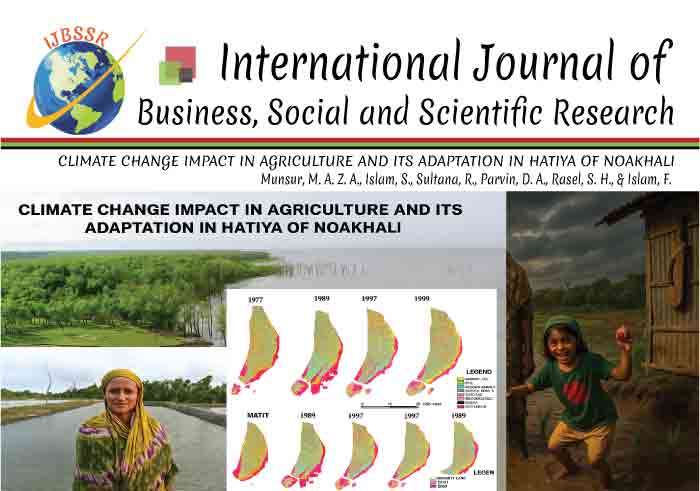CLIMATE CHANGE IMPACT IN AGRICULTURE AND ITS ADAPTATION IN HATIYA OF NOAKHALI

DOI: http://doi.org/10.55706/ijbssr13103
Bangladesh's coastline region is prone to climate-related
natural disasters due to its shifting geology and geomorphology. Climate change
impac ts include saline intrusion, coastal flooding, and altering weather
patterns threaten local agriculture in Hatiya. Hatiya upazila of Noakhali
district was studied for climate change and agriculture adaptation. Eighty
Hatiya upazila farmers from two unions were randomly recruited for the study.
Statistics were done with SPSS. A positive and strong correlation was
discovered between farmer education and climate change adoption. The average
farmer understood climate change impact at 23.21, with 76.25 percent medium,
16.25 percent high, and 7.50 percent low. The agriculture climate change
adaption score was 40.57. The majority (77.50%) had medium climate change
adaptation knowledge, followed by 16.25 percent high and 6.25 percent low.
First place was “Cultivation of saline tolerant varieties of crops” with 233
AI. Age, education, annual family income, communication exposure, media
contact, and climate change knowledge positively and significantly correlated
with agricultural adaptation in the research area. Higher age, education,
annual family income, communication exposure, extended media engagement, and
climate change understanding increased agricultural adaptability. Weather
problems affect 83.75 percent of farmers. The research locations faced
agricultural land salinity and adaptive knowledge challenges. The study found
that farmers' education, awareness, and resource access are crucial to adapting
to climate change.

